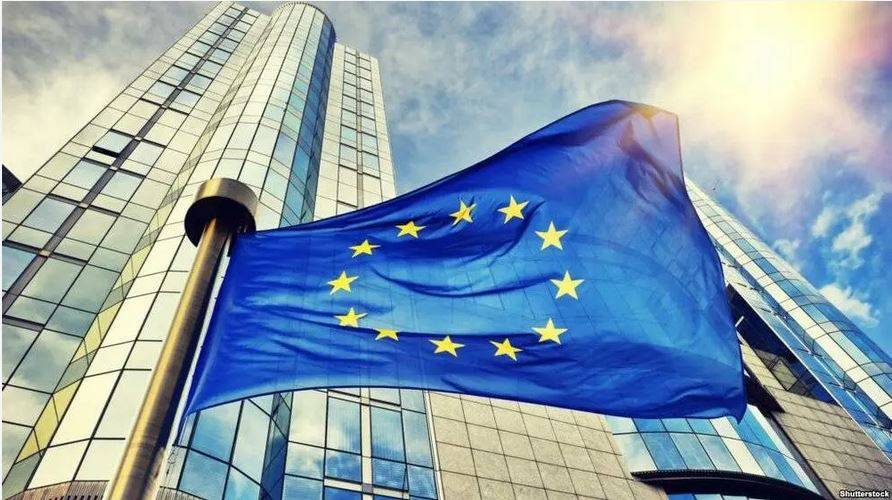681 Views
Europe at the Edge: Will the Continent Lead Tech Innovation or Watch from the Sidelines?
Europe’s position in the global technology race has reached a critical juncture. The continent faces a complex convergence of external pressures and internal vulnerabilities that threaten its strategic autonomy and risk relegating it to a secondary role. In today’s fast-paced technological landscape, leadership in areas such as artificial intelligence, quantum computing, sixth-generation (6G) networks, and clean energy technologies defines the balance of power in the international system. These domains are no longer confined to laboratories or niche industries; they have become the primary engines of economic growth, military strength, and social resilience. While the United States and the United Kingdom have deepened their cooperation in these fields, Europe risks marginalization. Unless the continent acts with speed and coordination, it may slip from being a global innovation leader to a passive bystander in this competition.
The strengthening of the U.S.–U.K. partnership has sounded a serious alarm for Europe’s strategic standing. The U.S.–U.K. Technology Prosperity Pact, signed in September 2025 with a value of $350 billion, has created a powerful innovation hub in artificial intelligence, quantum computing, energy technologies, and even 6G communications. This agreement includes joint projects in AI infrastructure, next-generation quantum computers, and civilian nuclear initiatives, supported by a $42 billion commitment for healthcare and clean energy.
By focusing on emerging technology standards, the pact positions the two countries as leaders in wireless innovation. Signed during President Trump’s visit to the U.K., the agreement builds on existing cooperation and establishes a closed ecosystem that accelerates research, development, and commercialization. For Europe, the danger of marginalization is real: the EU’s quantum budget accounts for only 5% of global private investment, while the U.S. attracts over 50%. Without countermeasures, Europe risks missing out on breakthroughs that will shape the future of industries.
This U.S.–U.K. alliance goes beyond research and industrial cooperation; it has become an integrated innovation network linking universities, the private sector, and defense industries. Such a network could shape global markets and security architectures for decades to come. By contrast, Europe’s fragmented and sometimes contradictory approach to innovation and regulation poses the risk of reducing it to a bystander. The consequences for Europe would be severe: it would lose influence in setting technology standards, supply chains, and even security dialogues, forcing it to follow rules designed by others.
One of Europe’s relative advantages lies in its ability to design comprehensive, ethics-based regulatory frameworks. Initiatives such as the AI Act, the Digital Services Act (DSA), and the Digital Markets Act (DMA) demonstrate Europe’s commitment to combining innovation with ethical principles and consumer protection. However, these regulations will only be effective if implemented swiftly and efficiently. Bureaucratic delays could render them obsolete before they take effect. Accelerating the approval and rollout of such laws, along with regulatory sandboxes for testing innovation in controlled conditions, could both ensure growth and create legal certainty. In this way, Europe could position itself as the global authority in the ethical and legal governance of technology.
Beyond regulation, Europe must act more proactively in digital diplomacy. Constant monitoring of U.S.–U.K. cooperation is essential to detect shifts in technological balance in real time. Mechanisms such as the EU–U.S. Trade and Technology Council (TTC) must move beyond dialogue forums and become tools for aligning strategies and defending Europe’s regulatory sovereignty. Likewise, building digital alliances with like-minded countries could strengthen Europe’s role as a mediator and standard-setter.
At the heart of innovation, however, are people and capital. Europe is facing a “brain drain,” as many leading scientists, engineers, and entrepreneurs migrate to the U.S. or U.K. in search of better financial and professional opportunities. To counter this trend, Europe must design attractive migration pathways for global talent while creating competitive opportunities for its domestic workforce. This requires sustained investment in research and development, as well as the creation of bold venture ecosystems capable of competing with Silicon Valley. Without adequate human and financial resources, Europe’s ambitions in advanced technologies will remain on paper.
Beyond its borders, Europe should consider building a broader technology bloc. Expanding research cooperation with Asia, Africa, and Latin America could enhance Europe’s role in shaping global standards. Such collaborations would not only increase innovation capacity but also embed Europe within diverse networks of knowledge and production, positioning it as a bridge between North America and emerging economies. Achieving this goal requires investment in development cooperation, technology transfer, and joint projects, but the payoff could be decisive for Europe’s strategic survival.
Today, Europe stands at a historic crossroads. While the U.S.–U.K. alliance consolidates its role as a global innovation hub, China is rapidly expanding its technological and industrial capacities. The danger of Europe becoming a marginal player is real and imminent. To compete effectively, Europe must accelerate regulation, pursue active digital diplomacy, retain human and financial capital, and build broad international alliances. At the same time, it must preserve its unique strength: combining technological progress with ethical governance.
Yet this balance will only matter if achieved quickly. Should Europe fail to adapt to the shifting global order, it will drift away from the technological frontier and be reduced to a peripheral actor. To preserve its sovereignty and influence, Europe must act now to secure its place as a central player in the future of global technology.
Translated by Ashraf Hemmati from the original Persian article written by Amin Mahdavi

Comment
Post a comment for this article